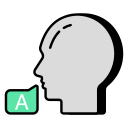This website uses cookies so that we can provide you with the best user experience possible. Cookie information is stored in your browser and performs functions such as recognising you when you return to our website and helping our team to understand which sections of the website you find most interesting and useful.
Learning German pronunciation can be a formidable challenge, especially for non-native speakers who may struggle with unfamiliar sounds and subtle intonation differences. Recent advancements in artificial intelligence are transforming how learners approach this task, offering personalized support that goes beyond traditional classroom methods. In this exploration, you’ll discover how AI-powered tools guide, correct, and enhance your spoken German, cultivating confidence and naturalness in real-world communication. We’ll dive into the mechanics behind these technologies and demonstrate how they empower individualized learning, provide precise feedback, and open up immersive practice opportunities. By the end, you’ll appreciate how these intelligent solutions can accelerate your journey toward authentic German pronunciation.
How AI Recognizes and Analyzes German Speech
Automatic Phonetic Transcription
Real-Time Pronunciation Feedback
Error Detection and Adaptive Corrections
Personalized Pronunciation Pathways
Diagnostic Assessments for Individual Learners
Dynamic Adjustment of Difficulty
Encouraging Motivation and Confidence

AI Conversation Partners

Stress and Intonation Training Scenarios


